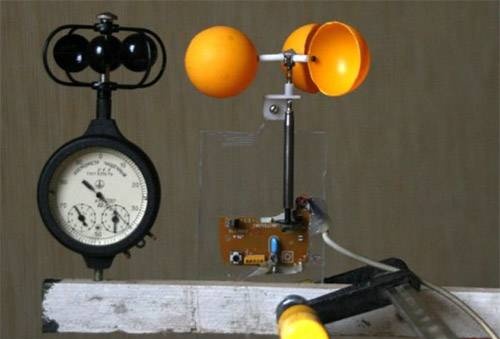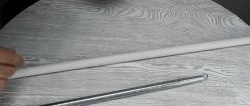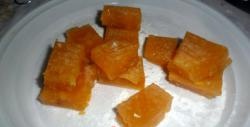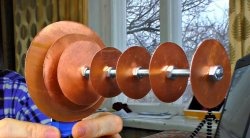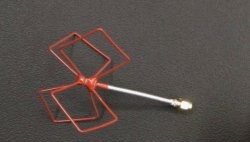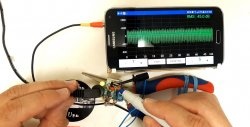DIY wind speed meter
The task arose to assemble an anemometer for one project so that data could be taken on a computer via a USB interface. This article will focus more on the anemometer itself than on the system for processing data from it:
1. Components
So, to manufacture the product, the following components were needed:
Mitsumi ball mouse - 1 pc.
Ping-pong ball - 2 pcs.
A piece of plexiglass of suitable size
Copper wire with a cross section of 2.5 mm2 - 3 cm
Ballpoint pen refill - 1 pc.
Chupa Chups candy stick - 1 pc.
Cable clip - 1 pc.
Hollow brass barrel 1 pc.
2. Impeller manufacturing
So, to manufacture the product, the following components were needed:
Mitsumi ball mouse - 1 pc.
Ping-pong ball - 2 pcs.
A piece of plexiglass of suitable size
Copper wire with a cross section of 2.5 mm2 - 3 cm
Ballpoint pen refill - 1 pc.
Chupa Chups candy stick - 1 pc.
Cable clip - 1 pc.
Hollow brass barrel 1 pc.
2. Impeller manufacturing
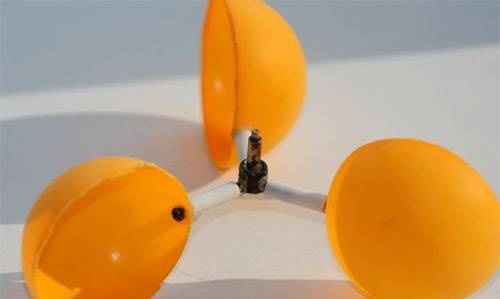
3 pieces of copper wire, each 1 cm long, were soldered to the brass barrel at an angle of 120 degrees. In the hole of the barrel I soldered a stand from a Chinese player with a thread at the end.
I cut the candy tube into 3 pieces about 2 cm long.
I cut 2 balls in half and, using small screws from the same player and polystyrene glue (with a glue gun), attached the ball halves to the lollipop tubes.
I placed the tubes with the ball halves on soldered pieces of wire and secured everything on top with glue.
3. Manufacturing of the main part
I cut the candy tube into 3 pieces about 2 cm long.
I cut 2 balls in half and, using small screws from the same player and polystyrene glue (with a glue gun), attached the ball halves to the lollipop tubes.
I placed the tubes with the ball halves on soldered pieces of wire and secured everything on top with glue.
3. Manufacturing of the main part


The supporting element of the anemometer is a metal rod from a ballpoint pen.I inserted a mouse disk (encoder) into the lower part of the rod (where the plug was inserted). In the design of the mouse itself, the lower part of the encoder rested against the mouse body to form a point bearing; there was lubricant there, so the encoder rotated easily. But it was necessary to fix the upper part of the rod, for this I selected a suitable piece of plastic with a hole exactly the diameter of the rod (such a piece was cut from the CD-ROMa carriage ejection system). It remained to solve the problem of ensuring that the rod with the encoder did not fall out of the point bearing, so I soldered a few drops of solder on the rod directly in front of the holding element. Thus, the rod rotated freely in the holding structure, but did not fall out of the bearing.
The reason why a circuit with an encoder was chosen is as follows: all the articles about homemade anemometers on the Internet described their manufacture based on a DC motor from a player, CD-ROM, or some other product. The problem with such devices is, firstly, their calibration and low accuracy at low wind speeds, and secondly, the nonlinear characteristic of wind speed in relation to the output voltage, i.e. There are certain problems in transferring information to a computer; you need to calculate the law of changes in voltage or current depending on wind speed. When using an encoder, there is no such problem, since the dependence is linear. The accuracy is the highest, since the encoder gives about 50 pulses per revolution of the anemometer axis, but the converter circuit is somewhat more complicated, which contains a microcontroller that counts the number of pulses per second on one of the ports and outputs this value to the USB port.
4. Testing and calibration
A laboratory anemometer was used for calibration
The reason why a circuit with an encoder was chosen is as follows: all the articles about homemade anemometers on the Internet described their manufacture based on a DC motor from a player, CD-ROM, or some other product. The problem with such devices is, firstly, their calibration and low accuracy at low wind speeds, and secondly, the nonlinear characteristic of wind speed in relation to the output voltage, i.e. There are certain problems in transferring information to a computer; you need to calculate the law of changes in voltage or current depending on wind speed. When using an encoder, there is no such problem, since the dependence is linear. The accuracy is the highest, since the encoder gives about 50 pulses per revolution of the anemometer axis, but the converter circuit is somewhat more complicated, which contains a microcontroller that counts the number of pulses per second on one of the ports and outputs this value to the USB port.
4. Testing and calibration
A laboratory anemometer was used for calibration
